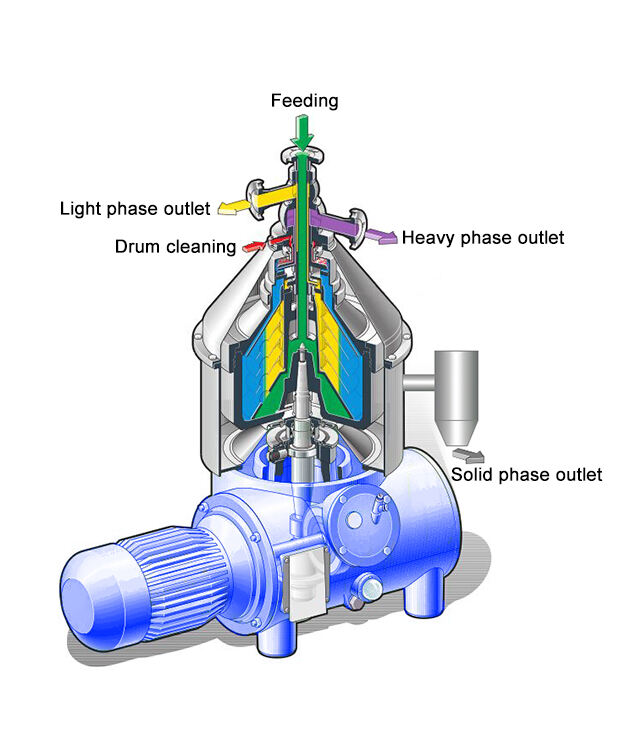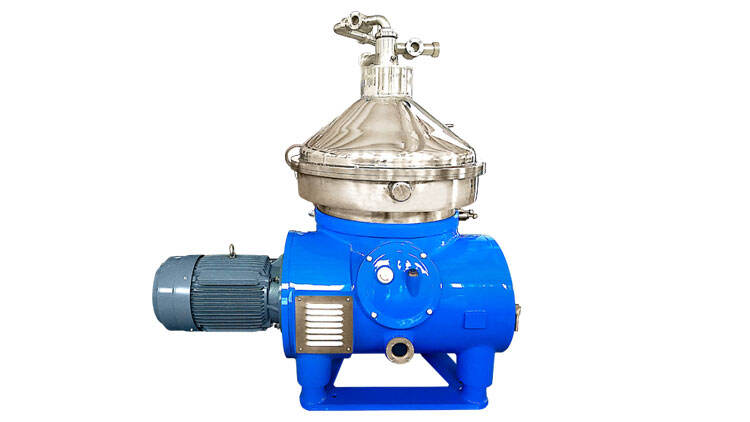
All the parts of the separator contacted with the materials are made
of stainless steel, which meets the requirements of food hygiene.
The
separator is mainly composed of import and export device, drum,
vertical shaft, transverse shaft, fuselage, speed measuring device,
brake device and motor. The centripetal pump structure is adopted for
discharging material, after separation, the material is discharged by
the centripetal pump, the output pressure is high (0-0.5 MPa), which can
be directly transported to downstream equipment. Its drum has been
accurately checked for dynamic balance, centrifugal friction clutch and
large helical gear pair are used to transmit power in power
transmission. The separator has the advantages of stable growth,
avoiding overload, small vibration, safety and reliability, simple
operation and convenient use. The bearings used in the separator all
adopt Swedish SKF brand to ensure the operation accuracy of the
equipment. If the separator is equipped with PLC electronic control
system, the program operation can be realized.
When the turbid liquid was fed into the high-speed rotating drum, it
enters the disc stack along the channel, under the strong centrifugal
force, the multi-components with different densities form three dynamic
concentric rings: a small amount of solid particles with the greatest
density move outward and accumulate on the wall of the drum to form the
outermost layer; the denser heavy phase liquid is thrown onto the lower
surface of the disc and slides down out of the disc area to form an
intermediate layer; the denser light phase liquid moves toward the
center of the drum to form the innermost layer. Then, the three
components are discharged from the drum by their respective channels.

